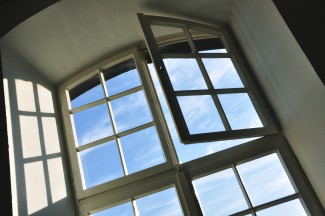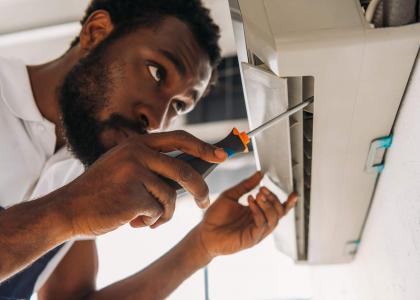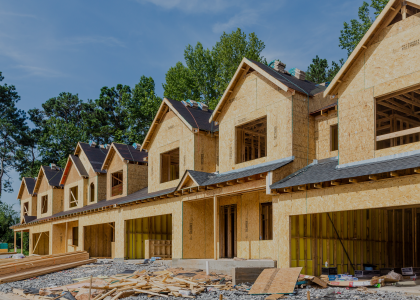Windows have advanced considerably over the decades — from drafty single-pane models to much better double-pane ones. Now, over just the past two years, thin triple-pane windows that offer a lot more insulation have entered the U.S. market. Such technology enables homes and buildings to save even more energy while being comfortable and bright, with plenty of windows.
The new windows are the topic of one of the more than 400 papers prepared for the Summer Study on Energy Efficiency in Buildings, beginning August 17. Conference attendees will have exclusive access to the papers, which explore a wide range of energy-saving technologies, policies, and programs for homes and buildings.
Register for 2020 Summer Study on Energy Efficiency in Buildings VIRTUAL
“Windows are how we connect to the outdoors,” says Robert Hart, principal scientific engineering associate at the Lawrence Berkeley National Laboratory, adding that they have a great impact on energy use and occupant comfort. Yet, he says, windows typically used today are the “poorest thermally performing part” of the building envelope, potentially resulting in drafts, condensation, or overheating.
Hart is part of a Department of Energy-funded team that is working with organizations and manufacturers (including makers of the new thin triple-pane windows — Anderson Corporation, Ply Gem, and Alpen HPP) to develop better windows, scale production, and reduce costs. We talked to Hart about this work and the Summer Study paper, “Innovative Market Pathways to Promote Adoption of High-Performance Windows,” that he co-authored with the team.*
Here are excerpts of our conversation:
Double-pane windows are often the norm. How are triple-paned ones different?
They are more insulating. In fact, the triple glass element with gas fills and low-emissivity (low-E) coatings can be twice as efficient as a double-pane low-E unit. This thermal improvement leads to several benefits. They keep room-side surface temperatures closer to the room air temperature, meaning they significantly reduce the risk of condensation on cold nights and are more comfortable to be next to on both hot and cold days. They also lose less heat to the outdoors, making homes more energy efficient and resilient.
Conventional triples are widely used in Northern Europe but represent less than 2% of the U.S. market. Our “thin triple” design is intended to make it easier and more cost effective for window companies to switch from today’s standard R3 double glazing to R5 triple-glazed windows.
What can you tell us about the thin triple-paned windows that recently entered the U.S. market?
The current offerings range from products designed for new construction production builders to products for high-end retrofits. Due to the current market conditions with COVID-19, they are all making a slow launch, but we are still very excited to see these products finding their way into the market. Two of the companies are represented in the top five of national residential sales, so they have the potential to make a large market impact.
Are these windows more expensive, and will they work in all existing homes and buildings?
Highly insulating windows, such as triple-pane windows, are good candidates to be used in most U.S. climates. The lowest possible cost for triple-pane windows will always be more than the lowest possible cost for double-pane windows, simply because there is more material being used. But we know the material costs at the manufacturer’s plant are low, and we also know that the current cost difference to consumers is much higher than it could be because the designs aren’t optimized and because production volume for triple-pane windows is so low.
We recently had a German window manufacturer visit our lab and she described to us how double-pane units from their factory cost more than triple-pane units because they are set up to make triples in volume, while doubles are considered special order products. This could be in the future for the United States, as well.
What are the biggest obstacles and opportunities for scaling the use of thin triple-pane windows?
The biggest obstacle is cost, which is related to volume, as noted above. The path to successfully gaining high market penetration, and therefore reducing the cost, is to initially identify opportunities where cost is less of an obstruction to adoption. In new construction, there are opportunities where using triple-pane windows as alternative means of code compliance in place of other mandatory envelope measures can actually reduce construction costs. With retrofits, where sales are often made directly to the occupants, the incremental cost of triple-pane is less of an obstacle. If better windows allow HVAC to be downsized, that’s another savings opportunity.
Given the improvement in windows, do new homes or buildings need to reduce the number of them to achieve net-zero energy use?
Not at all! In fact, they could use more windows. They just need to use better technology solutions than the windows typically used today. I have a favorite slide I always like to show in presentations of a home without windows — I haven’t met anyone yet who wants to live in that home!
High-performance windows used in conjunction with smart building envelope design, such as external shading and passive solar harvesting in cold climates, can allow buildings with large areas of windows to use less total energy than buildings with no windows at all. In commercial buildings, the daylight from windows also offsets electric lighting energy use. We call this concept net-zero or zero-energy windows.
*The paper’s co-authors are Stephen Selkowitz, affiliate, Lawrence Berkeley National Laboratory; Marc LaFrance, U.S. Department of Energy; Katherine Cort, Pacific Northwest National Laboratory; Maziar Shirakh, California Energy Commission; and John Jennings, Northwest Energy Efficiency Alliance.




